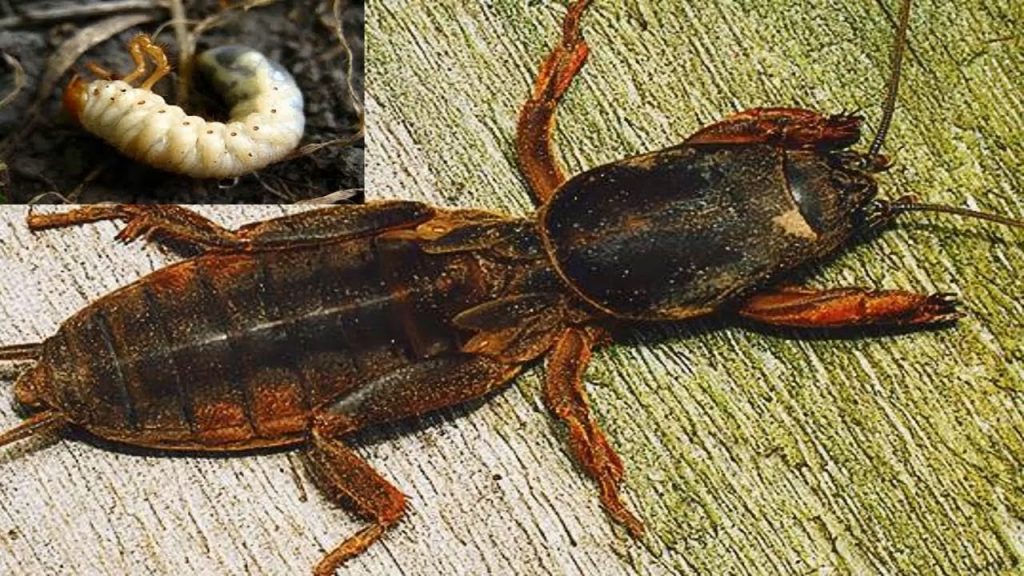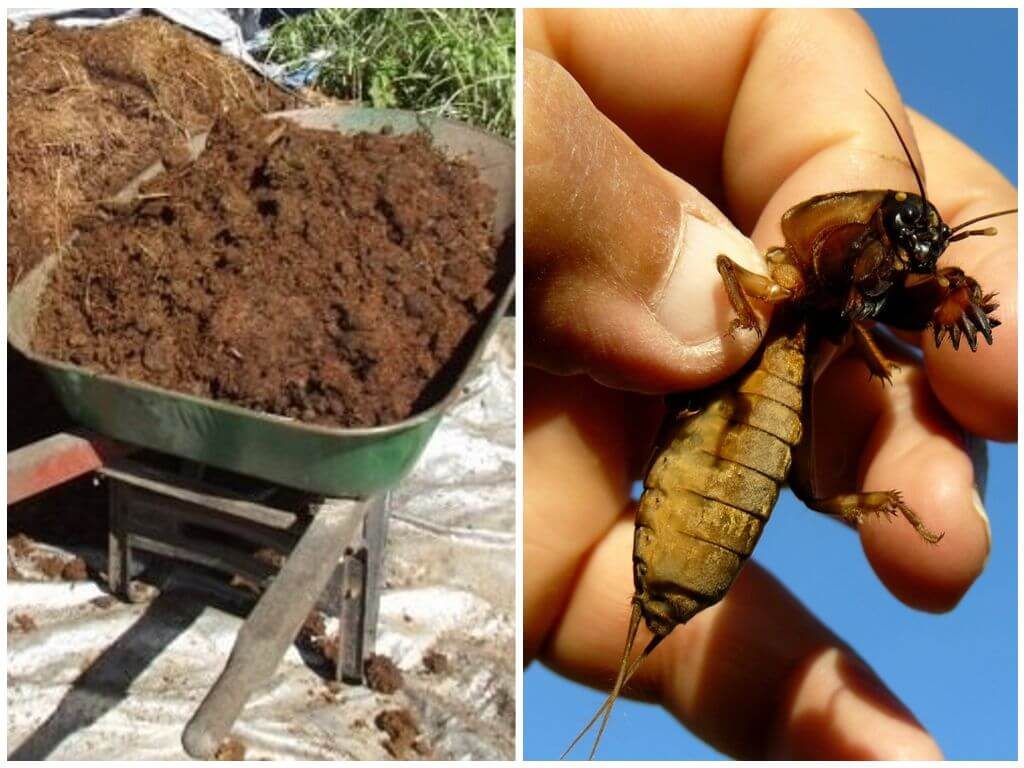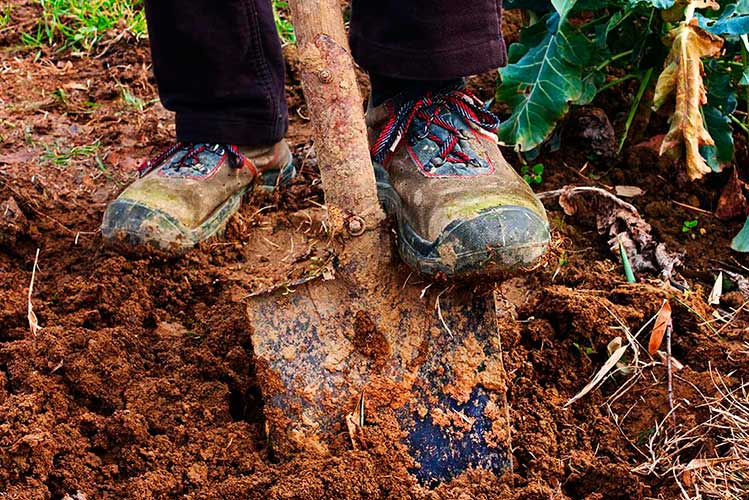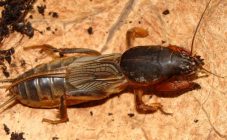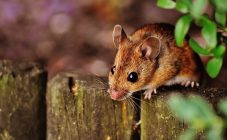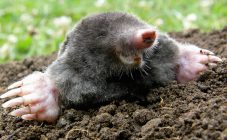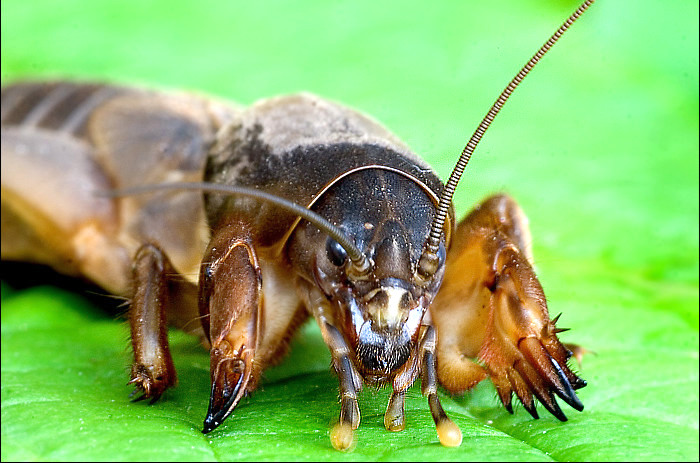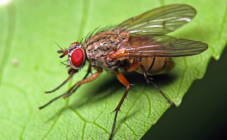Content:
When work begins in the garden or in the garden, the problem immediately arises of the fight against malicious insects that can cause irreparable harm to crops. One of these pests is the bear. The article will tell you how to get rid of the bear in the folk way.
What is the bear
Medvedka is a rather large insect. The length of her body ranges from 30 to 55 mm. A peculiarity of the insect is that the shape of the front paws is perfectly adapted to dig the ground: the legs are shovel-shaped, and the thighs are thick and powerful. Outwardly, the bear resembles cancer. She is capable of producing characteristic sounds that can be heard while working on the site.
The insect spends most of its time underground, making branchy passages and passages there. It comes to the surface only at night.
Medvedka prefers moist and loose soils, rich in organic components. This is due to the fact that the larvae, hatched from eggs, feed on humus in the first days of their life and only after a week begin to eat parts of the plants.
Adults feed not only on plant food, they also eat annelids, larvae that are in the soil. In this regard, the bear belongs to the polyphagous insects. Making moves underground, it gnaws at the roots of shrubs and herbaceous plants.
When the soil cools down to 5 ° C, the insect begins to prepare for winter. For wintering, it chooses manure heaps, plant remains, peat, digging tunnels into them. Their depth reaches 50 cm.
With the onset of spring, when the soil warms up to a temperature of 15 ° C and above, the larvae and adults wake up and begin to actively feed.
After mating, females make a nest in the soil at a depth of 15 cm, where they lay eggs in early summer. They resemble millet in appearance. The egg-laying period can last until early autumn.
After 2 - 3 weeks, larvae hatch from the eggs, which outwardly look like adults. After the first molt, they leave the nest and begin to lead an independent lifestyle. The full cycle of insect development lasts within 1 - 1.5 years.
Folk methods of dealing with a bear: advice from summer residents
Medvedka is capable of hosting a fairly large area. This forces summer residents to resort to different methods that will help get rid of the bear. If an insect is found on the site, it is worth figuring out how to get rid of the bear with folk remedies. They are affordable, efficient, and easy to use.
Getting rid of this pest requires diligence and a long investment. Since different regions differ in climatic conditions, soil characteristics, you need to use several methods that will exterminate the insect. Experienced gardeners are sure that it is better to deal with the pest in a comprehensive manner.
If a bear starts up, how to deal with it (folk remedies):
- Dung traps. This is the most proven and reliable method, which is based on the bear's love for humus. For this, in the fall, pits are equipped on the site, the size of which can be within 0.5 × 0.5 × 0.5 m.They are filled with manure, which will help attract a bear for the winter. When the air temperature is below zero, holes are dug up, and manure is scattered over the site. Insects and larvae will quickly die from the cold.
- Poisonous bait. It is better to build them in the spring (before the first shoots appear). For bait, you can use a grain of corn, barley, which is sprinkled with aldrin at the rate of 50 g of powder per 1 kg of grain.
- Soapy water. Having found a bear's mink, you can drop 2 - 3 drops of vegetable oil into it, and then pour a lot of water into it. For filling, you can use water from a hose or soapy water. To do this, dilute 10 g of soap or washing powder in 10 liters of liquid. After a while, the insect crawls out of the hole. It remains only to catch it and destroy it.
- Shadow. Medvedka loves to bask in the spring sun. To lure them on the site, you need to decompose pieces of any dark material that quickly heats up in the sun. For bait, it is recommended to put some fresh manure under the rags. From time to time you need to look under the decomposed material and catch the insects that warm there.
- Construction of barriers. As barriers, you can use plastic bottles or a nylon mesh. Their height can be in the range of 3-4 cm. Some gardeners put rubber rings or a nylon stocking on the stems of young plants, which are carefully wrapped around the roots of plants before planting them in open ground. Such simple manipulations can protect the stems and roots of young plants from the bear.
- Planting plants with a pungent smell on the site. It is recommended to plant marigolds, chrysanthemums, garlic, coriander in the aisles. The smell of these plants scares off the bear. You can also scatter eggshells, onion skins on the site.
- Dig in champagne bottles on the site, after filling them with water and honey. On the sweet smell, insects climb into bottles, but they can no longer get out.
- You can make your own pest bait. To do this, you need to boil a grain of corn or barley. After it has cooled down, add 50-60 g of sunflower oil to it. Mix the whole mass thoroughly by adding 10 g of bankol or karbofos to it. The preparation of such a bait is carried out only in glass or wood dishes. After 24 hours after cooling, the bait loses its effectiveness. The prepared mixture is brought into the bear's burrow. Every 4 - 5 days it needs to be replaced with a fresh one. For 100 m² of land, 1 kg of bait is enough.
You can get rid of the bear through the use of chemicals. Among the most famous are:
- The use of drugs phenoxin plus, thunder, medvetox, grizzly, bankcol, rembek, medvegon. They are produced in the form of granules, which insects quickly eat. The drug is laid out near the manure heaps or poured directly into the insect's hole and sprinkled with a thin layer of earth.
- Use of insecticide suspensions. For this, the funds of aktar 25 WG or prestige 290 FS are recommended. Before planting seedlings in open ground, they process the roots of the shoots.
The use of biological preparations is also possible. Experienced summer residents prefer such means:
- Nemabakt. Includes bacteria and predatory nematodes. The drug penetrates into the bear, decomposing from the inside. To process 1 hundred square meters of land, 1 package is enough To prevent nebabakt from losing its effectiveness, it is recommended to observe the conditions of its storage, transportation and use.
- Boverin. It consists of fungal spores that provoke muscardino disease in the bear. Once in the insect's body, the spores grow there and lead to the death of the pest.
Preventive measures
To prevent the spread of the bear on the site, it is recommended to carry out preventive measures:
- When loosening or digging the ground, you should try not to use manure or peat as top dressing. You can replace it with chicken droppings.
- Plant crops that emit a specific smell around the perimeter of the site or in the aisles. It can be marigolds, coriander, garlic. The smell of these plants repels pests.
- Since the bear loves warm soil, it is recommended to use light-colored materials (sawdust, straw, needles) for mulching the soil. As a result, the earth will not heat up very much, which will scare away the bear.
- Try to remove logs, pieces of dark materials, slate and boards from the site. The possibility is not excluded that insects will hide under them.
- Remove weeds on the territory in a timely manner.
- Before using humus or manure, it is recommended to collect it in a container and treat it with special agents that contribute to the destruction of the bear and its larvae
- When creating compost heaps, care should be taken to avoid contact with the soil surface.
The use of folk recipes, mechanical methods, chemical and organic preparations will help get rid of the bear on the site once and for all. And the implementation of preventive measures will contribute to the minimum spread of the pest in the beds in the future.
